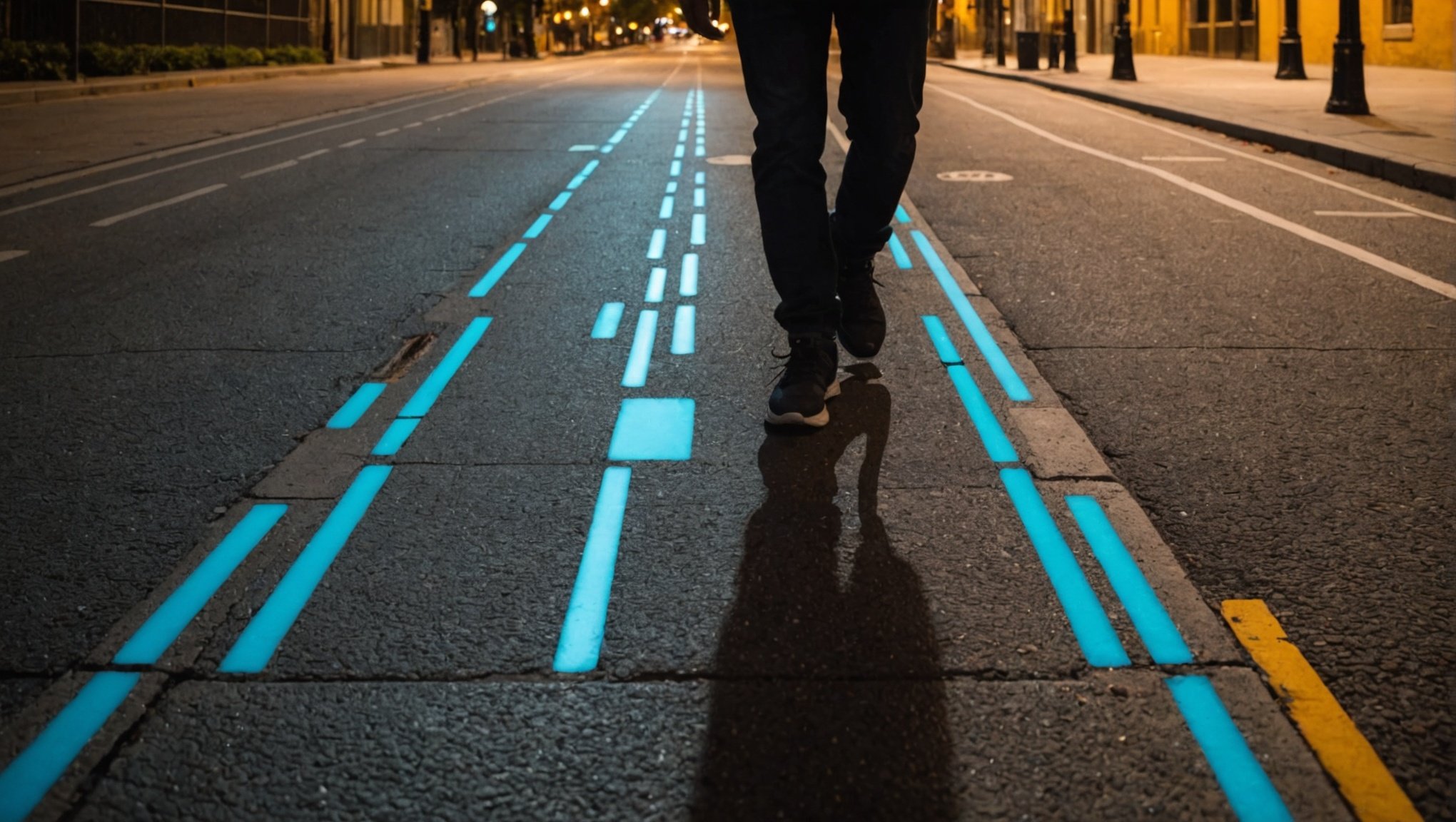Transforming Footsteps into Power: Can Piezoelectric Materials Fuel Our Streetlights?
The Rise of Piezoelectric Technology
In the quest for sustainable energy solutions, one innovative approach is gaining significant attention: converting footsteps into electricity using piezoelectric materials. This technology, often referred to as piezoelectric energy harvesting, has the potential to revolutionize the way we generate power, especially in urban areas with high foot traffic.
Piezoelectric materials have a unique property; they generate an electrical charge when subjected to mechanical stress, such as pressure or vibrations. This characteristic makes them ideal for harnessing kinetic energy from various sources, including footsteps. The concept is simple yet powerful: as people walk on specially designed tiles or floors, the mechanical stress applied to the piezoelectric materials produces electrical charges that can be stored and used to power various devices.
Have you seen this : Exploring the Progress of Quantum Internet: Implications for the Future of Cybersecurity
How Piezoelectric Energy Harvesting Works
To understand the mechanics behind this technology, let’s delve into the process step-by-step.
Mechanical Stress to Electrical Charge
When a person steps on a piezoelectric tile, the weight and pressure applied create mechanical stress on the material. This stress triggers a piezoelectric effect, where the material generates an electrical charge. The amount of charge produced depends on the magnitude of the stress and the properties of the piezoelectric material[4].
In the same genre : Revolutionizing Stock Trading: How AI Algorithms Boost Real-Time Decision Making
Energy Storage and Utilization
The electrical charges generated are then collected and stored in batteries or capacitors. This stored energy can be used to power a variety of devices, from streetlights and signage to more complex systems like security cameras and communication equipment.
Real-World Applications
One of the most compelling examples of this technology in action is in Japan, where public spaces like train stations and shopping malls are being equipped with piezoelectric floors. These floors convert the footsteps of pedestrians into electricity, which is then used to power the facilities’ lighting and other electrical needs[3].
Benefits and Advantages
The use of piezoelectric materials for energy harvesting offers several benefits that make it an attractive solution for sustainable energy.
Sustainable Energy Source
Piezoelectric energy harvesting is a clean and renewable energy source. It leverages existing foot traffic to generate power, reducing the reliance on fossil fuels and lowering carbon emissions. This makes it an excellent addition to the portfolio of sustainable energy solutions[1].
Energy Efficiency
The efficiency of piezoelectric materials in converting mechanical energy into electrical energy is relatively high compared to other energy harvesting methods. This efficiency ensures that a significant portion of the kinetic energy from footsteps is converted into usable electricity.
Low Maintenance
Piezoelectric tiles and systems require minimal maintenance. They are durable and can withstand heavy foot traffic, making them suitable for high-usage areas like public spaces and commercial buildings.
Practical Considerations and Challenges
While the potential of piezoelectric energy harvesting is significant, there are several practical considerations and challenges that need to be addressed.
Cost and Implementation
One of the primary challenges is the initial cost of implementing piezoelectric flooring. The materials and installation can be expensive, although the long-term benefits and savings can offset these costs. Additionally, integrating these systems into existing infrastructure can be complex and may require significant renovations.
Energy Output
The amount of energy generated from foot traffic can vary widely depending on the location and the number of people using the area. For example, a busy shopping mall might generate more electricity than a quiet residential street. Here is a rough estimate of the energy output from different scenarios:
| Location | Average Foot Traffic | Estimated Energy Output |
|---|---|---|
| Shopping Mall | 10,000 people/day | 1-2 kW/day |
| Train Station | 50,000 people/day | 5-10 kW/day |
| Residential Street | 1,000 people/day | 0.1-0.5 kW/day |
Voltage and Power Stability
The voltage and power output from piezoelectric systems can be variable, depending on the number of people walking and the pressure applied. This variability requires advanced control systems to stabilize the output and ensure it is compatible with the electrical grid or local devices.
Case Studies and Examples
Several case studies and examples illustrate the feasibility and effectiveness of using piezoelectric materials for power generation.
Japan’s Innovative Approach
In Japan, the city of Tokyo has implemented piezoelectric flooring in several public spaces, including train stations. This initiative not only generates electricity but also serves as a sign of the city’s commitment to sustainable energy solutions. According to a report, “The piezoelectric floors in Tokyo’s train stations generate enough electricity to power the station’s lighting and other electrical needs, reducing the city’s energy consumption and carbon footprint”[3].
University Campus Implementation
A university in the United States has installed piezoelectric tiles in one of its busiest buildings. The energy generated is used to power the building’s lighting and HVAC systems. This project not only reduces the university’s energy costs but also serves as an educational tool for students, demonstrating the practical application of sustainable energy technologies.
Future Prospects and Innovations
As technology continues to evolve, we can expect several innovations that will enhance the efficiency and applicability of piezoelectric energy harvesting.
Advanced Materials
Researchers are working on developing new piezoelectric materials with higher efficiency and durability. These advancements could significantly increase the amount of energy generated from each footstep, making the technology even more viable.
Integration with Other Energy Sources
Piezoelectric energy harvesting can be integrated with other renewable energy sources like solar and wind power to create hybrid energy systems. This integration can provide a more stable and reliable energy supply, especially in areas with variable weather conditions.
Smart Cities and Urban Planning
The integration of piezoelectric technology into urban planning can transform cities into more sustainable and energy-efficient environments. For instance, smart streets could be designed with kinetic tiles that generate electricity, powering streetlights, traffic signals, and other urban infrastructure. and Practical Advice
Transforming footsteps into power using piezoelectric materials is a promising approach to sustainable energy generation. Here are some practical insights and actionable advice for those interested in implementing this technology:
- Assess Foot Traffic: Before installing piezoelectric tiles, assess the foot traffic in the area to ensure it is sufficient to generate meaningful amounts of electricity.
- Choose the Right Materials: Select high-quality piezoelectric materials that are durable and efficient in converting mechanical stress into electrical energy.
- Integrate with Existing Systems: Ensure that the piezoelectric system is compatible with existing electrical infrastructure to maximize efficiency and usability.
- Monitor and Maintain: Regularly monitor the performance of the system and perform necessary maintenance to ensure optimal energy output.
In the words of Dr. Maria Hernandez, a leading researcher in piezoelectric technology, “The potential of piezoelectric energy harvesting is vast. By leveraging the kinetic energy from footsteps, we can create sustainable, clean energy solutions that contribute significantly to our global efforts in reducing carbon emissions and promoting renewable energy.”
As we move forward, it is clear that piezoelectric materials will play a crucial role in our transition to sustainable energy solutions, turning what was once mere foot traffic into a valuable source of power.






